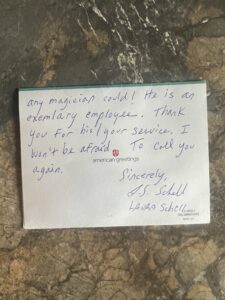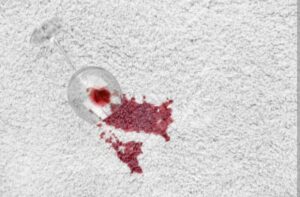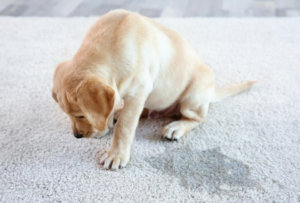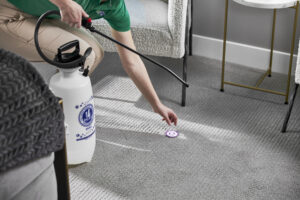Vintage Oriental rugs are not just floor coverings; they are exquisite artifacts that carry a rich cultural legacy and a unique story woven into their fibers. As with any precious heirloom, these rugs demand special care and attention to maintain their timeless beauty. Professional area oriental rugs cleaning services help maintain these timeless beauties. In this in-depth guide, we’ll explore effective cleaning strategies tailored to the delicate nature of vintage Oriental rugs, ensuring their preservation for generations to come.
Understanding Vintage Oriental Rugs: A Walk Through Time
Before delving into cleaning strategies, it’s crucial to appreciate the characteristics that make vintage Oriental rugs distinctive. Crafted with meticulous skill and often using natural dyes, these rugs showcase intricate patterns and a blend of cultural influences. The wool or silk fibers used in their creation contribute to their exceptional texture, adding to the overall allure.
-
Regular, Gentle Maintenance:
Begin with a commitment to regular maintenance. Vintage rugs benefit from frequent but gentle care. Use a soft-bristled brush or a vacuum cleaner with adjustable height settings to remove surface dust. Regularly rotating the rug helps distribute wear evenly.
For valuable vintage rugs, consider seeking the expertise of a professional rug appraiser or cleaner. They can assess the rug’s condition, identify any existing damage, and recommend a cleaning strategy tailored to its specific needs.
-
Testing for Colorfastness:
Vintage Oriental rugs often feature natural dyes that may not be colorfast. Before attempting any cleaning, perform a colorfastness test on a small, inconspicuous area to ensure the colors won’t bleed or fade during the cleaning process. Or you can avail area oriental rugs cleaning services in Snohomish County.
When dealing with spills or stains, opt for a gentle spot-cleaning approach. Use a clean, white cloth or sponge to blot the stain, starting from the outer edges and moving inward. Avoid rubbing vigorously, as this can damage the fibers.
Choose cleaning solutions specifically formulated for delicate textiles. Mild, pH-balanced cleaners work well for vintage Oriental rugs. Dilute the solution as recommended and test it on a small area before applying it to the entire rug.
Handwashing is often the safest method for cleaning vintage Oriental rugs. Lay the rug flat on a clean surface and use a soft brush or sponge to apply the cleaning solution. Work in the direction of the rug’s pile, being mindful not to soak the fibers excessively.
After applying the cleaning solution, ensure thorough rinsing to remove any residual cleaner. Incomplete rinsing can leave behind a soapy residue that attracts dirt, potentially causing long-term damage.
Proper drying is critical to prevent mold or mildew growth. Lay the rug flat on a clean, dry surface, avoiding direct sunlight. Ensure both sides are exposed to air circulation, and use fans or open windows to expedite the drying process.
Vintage rugs are susceptible to fading, and prolonged exposure to harsh sunlight can accelerate this process. Place the rug away from direct sunlight or use window treatments to diffuse sunlight and protect the colors.
Employing a quality rug pad underneath the vintage Oriental rug provides support, prevents slipping, and minimizes friction. This simple addition can significantly contribute to the rug’s longevity. Availing area oriental rugs cleaning services in Snohomish County also help maintaining these rugs.
-
Dealing with Moth Prevention:
Vintage rugs, especially those stored for extended periods, are susceptible to moth damage. Implement preventive measures such as regular vacuuming, proper storage, and the use of natural moth repellents.
-
Seeking Professional Restoration:
For extensive damage or wear, consider professional restoration services. Trained experts can mend tears, restore faded colors, and address other issues, revitalizing the rug while maintaining its authenticity.
When storing a vintage Oriental rug, professional area oriental rugs cleaning services in Snohomish County advice to roll it with the pile facing inward to prevent creases. Use acid-free paper as a barrier to protect against any potential reactions with the rug’s fibers.
-
Maintaining Humidity Levels:
Vintage rugs are sensitive to changes in humidity. Ideally, store them in a cool, dry environment with stable humidity levels to prevent the growth of mold or mildew.
-
Creating a No-Shoes Policy:
Implement a no-shoes policy in the area where the vintage Oriental rug is placed. This simple step can significantly reduce the amount of dirt and debris brought onto the rug, minimizing the need for frequent cleaning.
Common Mistakes to Avoid When Cleaning Oriental Rugs
Oriental rugs, with their intricate designs and rich cultural history, are not just floor coverings – they are works of art that deserve meticulous care. Cleaning these rugs can be a delicate task, and unfortunately, many well-intentioned individuals make mistakes that can lead to irreversible damage. In this comprehensive guide, we’ll delve into the common mistakes to avoid when cleaning Oriental rugs, ensuring you preserve their beauty and longevity.
-
Neglecting Regular Maintenance:
One of the most common mistakes is neglecting routine maintenance. Oriental rugs require regular attention to prevent dust and debris from settling deep into the fibers. Regular vacuuming, turning, and shaking can go a long way in maintaining the rug’s vibrancy. One can avail area oriental rugs cleaning services in Snohomish County for daily maintenance.
Avoid the temptation to use strong, chemical-laden cleaners. Harsh chemicals can strip the natural oils from the rug’s fibers, leading to fading, dryness, and even weakening of the material. Opt for mild, pH-balanced cleaners specifically designed for delicate textiles.
Excessive moisture is a significant risk when cleaning Oriental rugs. Over-wetting can lead to mold and mildew growth, color bleeding, and structural damage. Use a controlled amount of water and ensure thorough drying to prevent these issues.
-
Ignoring Colorfastness Testing:
Skipping colorfastness testing is a cardinal sin when cleaning Oriental rugs. Colors can bleed or fade if the dyes used in the rug are not stable. Always test a small, inconspicuous area before applying any cleaning solution to the entire rug.
Scrubbing aggressively may seem like a good way to tackle stains, but it can damage the delicate fibers of an Oriental rug. Instead, opt for gentle blotting or dabbing to lift stains without causing harm.
-
Using Improper Cleaning Equipment:
Inappropriate cleaning equipment, such as stiff brushes or abrasive pads, can scratch the surface and damage the fibers. Stick to soft brushes or clean, white cloths to avoid unintended harm during the cleaning process.
-
Ignoring Professional Help:
Some individuals underestimate the complexity of Oriental rug cleaning and attempt to handle it entirely on their own. While regular maintenance can be done at home, deep cleaning and stain removal may require professional expertise to avoid costly mistakes.
Placing an Oriental rug in direct sunlight for prolonged periods can result in fading. Protect your rug by keeping it away from harsh sunlight or rotating it regularly to ensure even wear.
-
Skipping Padding Underneath:
Using an appropriate rug pad is often overlooked but crucial for preserving an Oriental rug. A good pad provides support, prevents slipping, and reduces friction, ultimately extending the life of the rug.
-
Folding or Rolling Incorrectly:
Improper folding or rolling can cause creases and distortions in the rug. Expert area oriental rugs cleaning services in Snohomish County advise that when storing or transporting, roll the rug with the pile facing inward to avoid damage to the outer fibers.
-
Ignoring Pet Stains Promptly:
Pet accidents happen, and ignoring them can lead to permanent damage. Address pet stains promptly, using appropriate cleaners and techniques to prevent odors and discoloration.
Attempting DIY repairs on fringes or damaged areas can often worsen the situation. Leave intricate repairs to professionals who understand the intricacies of Oriental rug restoration.
-
Skipping Professional Cleaning:
While regular maintenance is essential, professional cleaning is equally important. Skipping periodic professional cleaning can allow dirt and grime to accumulate over time, leading to irreversible damage.
-
Rollers on Vacuum Cleaners:
Be cautious when using vacuum cleaners with rollers or beater bars. These can pull and tug at the rug fibers, causing damage. Opt for vacuum cleaners with adjustable height settings or use handheld attachments.
-
Ignoring Storage Guidelines:
When storing an Oriental rug, follow proper guidelines to prevent moth damage, moisture buildup, and creasing. Roll the rug with acid-free paper and store it in a cool, dry place.
Conclusion
In conclusion, cleaning vintage Oriental rugs requires a thoughtful and gentle approach. By incorporating these strategies into your rug care routine, you not only preserve the aesthetic appeal of these timeless pieces but also contribute to the legacy embedded in their intricate designs. One can also avail area oriental rugs cleaning services in Snohomish County to maintain these beauties. Each thread in a vintage Oriental rug tells a story, and with the right care, that story can continue to captivate and inspire for generations to come.














